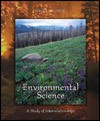 |  Environmental Science: A Study of Interrelationships, 8/e Eldon Enger,
Delta College
Bradley F. Smith,
Western Washington University
Land-Use Planning
Chapter ObjectivesAfter reading this chapter, you should be able to:
| Explain why most major cities are located on rivers, lakes, or the ocean. |
 |  |  | | Describe the forces that result in farmland adjacent to cities being converted to urban uses. |
 |  |  | | Explain why floodplains and wetlands are often mismanaged. |
 |  |  | | Describe the economic and social values involved in planning for outdoor recreation opportunities. |
 |  |  | | Explain why some land must be designated for particular recreational uses, such as wilderness areas, and why that decision sometimes invites disagreement from those who do not desire to use the land in the designated way. |
 |  |  | | List the steps in the development and implementation of a land-use plan. |
 |  |  | | Describe methods of enforcing compliance with land-use plans. |
 |  |  | | Describe the advantages and disadvantages of both local and regional land-use planning. |
|



 2002 McGraw-Hill Higher Education
2002 McGraw-Hill Higher Education